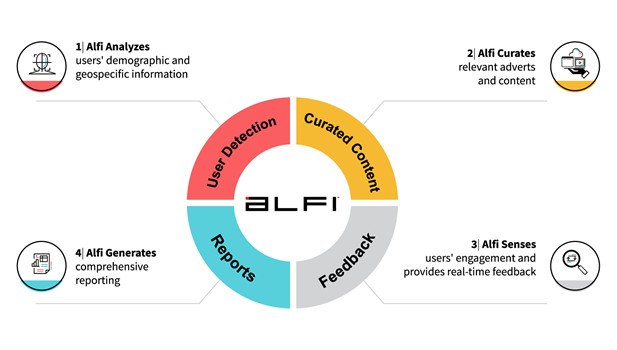Credit and Security Agreement. On April 12, 2022, we entered into a Credit Agreement with Lee Aerospace, a corporation controlled by James Lee, one of our Board members and a stockholder, as lender. Pursuant to the Credit Agreement, the lender has made available to us until the maturity date a non-revolving line of credit, up to an aggregate principal amount of $2,500,000, on the terms and conditions set forth in the Credit Agreement. Through May 10, 2022, the lender has funded to the Company $1,000,000 under the Credit Agreement. Prior to the maturity date, we may borrow an additional $1.5 million under the Credit Agreement, in the lender’s sole discretion and subject to us requesting such additional funds from the lender in accordance with the Credit Agreement, the accuracy of our representations in the Credit Agreement and related documents, and that no default under the Credit Agreement has occurred and is continuing.
The entire outstanding principal amount borrowed under the Credit Agreement, together with all accrued and unpaid interest on such borrowings outstanding from time to time, is due and payable on the earlier of: (i) the date upon which we consummate a debt or equity financing in an amount equal to or greater than $4,000,000 or (ii) April 12, 2023. Interest on the unpaid principal amount borrowed under the Credit Agreement accrues at an annual rate of 6% through October 12, 2022, and at an annual rate of 9% thereafter; provided, however, that upon the occurrence of an event of default, additional interest at an annual rate of 3% will accrue on all borrowings through October 12, 2022. All or part of the outstanding principal amount borrowed under the Credit Agreement may be prepaid at any time without penalty or premium, provided that such prepayments must be accompanied by the payment of all interest accrued on the amount so prepaid through the date of prepayment. The principal amount so prepaid may not be reborrowed under the terms of the Credit Agreement.
All of our obligations under the Credit Agreement and all related documents are secured by a first lien on substantially all of our assets. In connection with and as contemplated by the Credit Agreement, we also executed a Non-Revolving Line of Credit Note, a Patent Security Agreement and a Trademark Security Agreement in favor of the lender, each containing customary terms and conditions for a transaction of the size and type contemplated by the Credit Agreement.
In addition, in connection with the Credit Agreement and as a required condition thereof, on April 12, 2022 we issued to the lender a warrant to purchase up to 1,250,000 shares of the Common Stock at any time, or from time to time, on or after July 12, 2022 and prior to April 12, 2025, at an exercise price of $1.51 per share of Common Stock. The warrant may be exercised for cash or on a cashless basis, and the exercise price of the warrant is subject to anti-dilution adjustments for stock splits, stock dividends and similar corporate actions, but not for other dilutive equity issuances. The warrant also provides for certain “piggy back” registration rights to the lender if, at any time prior to the six-month anniversary of the expiration date, we determine to register on a new registration statement any shares of Common Stock for resale for the account of selling stockholders, subject to certain exceptions.
Secured Notes. During the year ended December 31, 2021 and immediately prior to our IPO, we had outstanding promissory notes to Lee Aerospace, a corporation controlled by James Lee, one of our Board members and a stockholder. The notes had an aggregate principal amount of $2.5 million and bore interest at the rate of 5.0% per year. The notes matured upon the closing of our IPO. The notes were secured by a pledge of shares by Paul Pereira, our former Chief Executive Officer, and John M. Cook II, our Chief Business Development Officer, and one note was also secured by a pledge of all of our intellectual property. On May 7, 2021, we used the net proceeds from our IPO to repay the amount outstanding on these notes which, including accrued interest, was approximately $2.66 million.
Tablets. Pursuant to a Letter Agreement dated March 19, 2020, Lee Aerospace advanced on the Company’s behalf 7,600 tablets from Lenovo Group Limited on which the Company could install Alfi software. Under the Letter Agreement, the Company had the right to acquire those tablets from Lee Aerospace at any time, or from time to time, upon payment of a purchase price of $125 per tablet. As of December 31, 2020, we completed the purchase of all 7,600 tables.
Bridge Loans. On December 30, 2020, we entered into a bridge loan agreement with Lee Aerospace (with respect to $1,700,000), Paul Pereira (with respect to $250,000), our former Chief Executive Officer, and Dennis McIntosh (with respect to $50,000), our former Chief Financial Officer, in an amount not to exceed an aggregate of $2,000,000 and an amount not less than $1,000,000; provided that any advances in excess of $1,000,000 would be at the discretion of the lenders. On March 22, 2021, we entered into a second bridge loan agreement to provide for an additional $250,000 with Lee Aerospace (with respect to $100,000), Paul Pereira (with respect to $100,000), our former Chief Executive Officer, and Rachael Pereira (with respect to $50,000), the wife of our former Chief Executive Officer. On April 1, 2021, we entered into a third bridge loan agreement to provide for an additional $500,000 with Lee Aerospace (with respect to $100,000), Paul Pereira (with respect to $100,000), our former Chief Executive Officer, Dennis McIntosh (with respect to $50,000), our former Chief Financial Officer, Charles Pereira (with respect to $50,000), our former Chief
